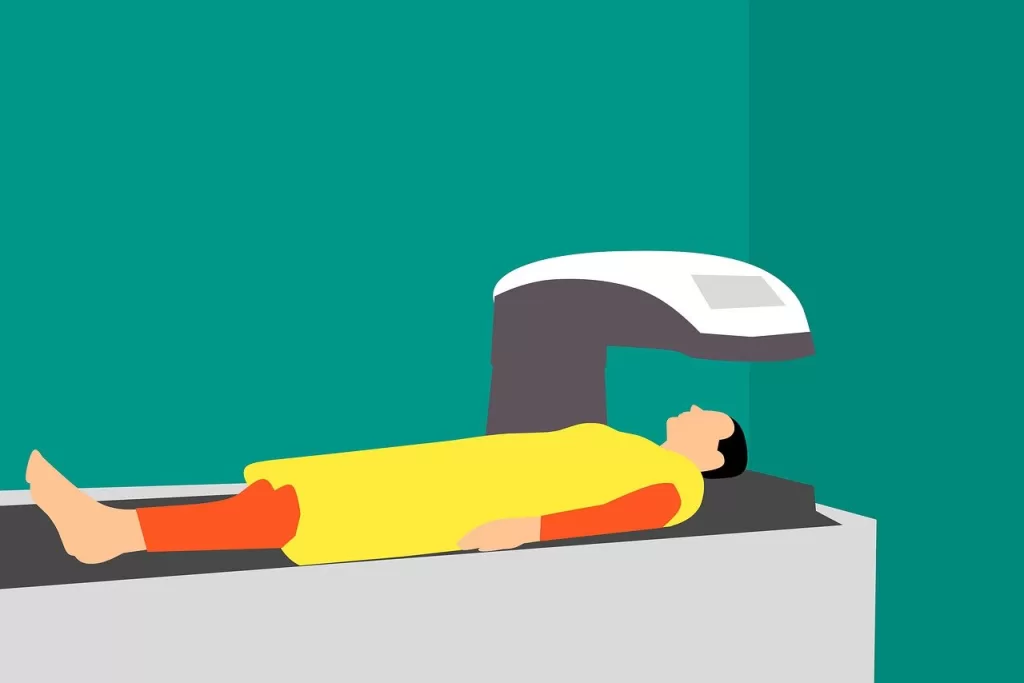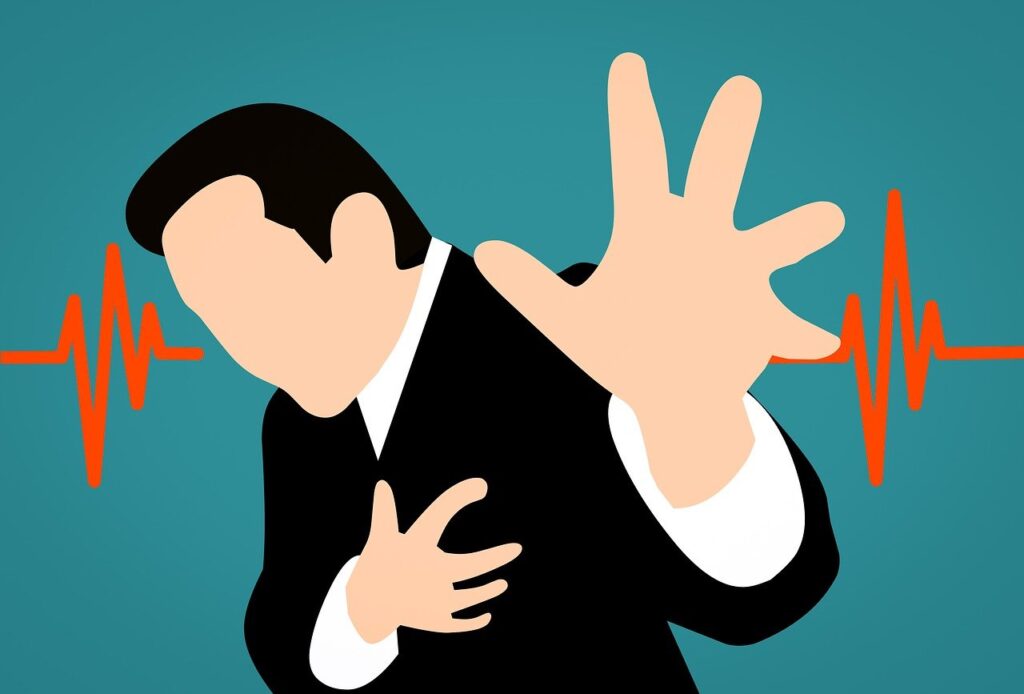Shoulder pain when crossing arm over chest is a common discomfort. This type of pain can have various triggers, ranging from muscle strain to underlying medical conditions. In a moment, I will delve into the different aspects of shoulder pain you may experience when crossing your arm over your chest. These include its causes, symptoms, and potential treatments.
Why Does My Shoulder Hurt When I Cross My Arm Across My Chest?
- Muscle Strain: When you overuse or make sudden movements, this can lead to muscle strain, resulting in you having shoulder pain when you cross your arm over your chest.
- Rotator Cuff Injuries: Injuries or inflammation of the rotator cuff, i.e. a group of muscles and tendons in the shoulder, can cause pain during this motion.
- Tendinitis: Inflammation of your tendons, often due to repetitive motions, which can result in you having discomfort.
- Frozen Shoulder: Medically known as adhesive capsulitis, this condition causes you to have pain and stiffness, especially during shoulder movements.
- Nerve Compression: Your pinched nerves, such as the brachial plexus, can lead to radiating pain when crossing your arm over your chest.
Causes of Shoulder Pain in Female

Shoulder pain especially in females can also stem from various causes, some of which include:
- Rotator Cuff Injuries: These are common and can result from overuse, repetitive motions, or sudden trauma. Tendinitis, bursitis, or tears within the rotator cuff muscles can lead to pain.
- Frozen Shoulder (Adhesive Capsulitis): Characterized by stiffness and pain in the shoulder joint, often restricting movement. It can occur spontaneously or following an injury or surgery.
- Osteoarthritis: Degeneration of joint cartilage that can affect the shoulder, leading to pain and limited range of motion.
- Shoulder Impingement Syndrome: Happens when the tendons of the rotator cuff muscles become pinched or compressed during shoulder movements, causing pain and inflammation.
- Bursitis: Inflammation of the bursa, the fluid-filled sac that cushions the shoulder joint, can cause pain, especially with movement.
- Shoulder Dislocation or Instability: Dislocation occurs when the upper arm bone pops out of the socket. Instability refers to a looseness in the shoulder joint that can cause frequent dislocations or a feeling of the shoulder slipping out of place.
- Fractures or Injuries: A fall or trauma can result in fractures of the shoulder bones or other soft tissue injuries, leading to pain and restricted movement.
- Referred Pain: Sometimes, pain felt in the shoulder might be referred from other areas like the neck, diaphragm, or even organs like the gallbladder or heart.
- Tendon Tears: Apart from rotator cuff tears, tears in other tendons around the shoulder can also cause pain and limit movement.
- Overuse or Poor Posture: Repetitive movements or prolonged poor posture can strain the shoulder muscles, leading to pain and discomfort.
- Tendonitis: Inflammation of tendons in the shoulder due to repetitive activities or sudden exertion can cause pain and limited mobility.
- Fibromyalgia: A condition characterized by widespread musculoskeletal pain, fatigue, and tenderness in specific areas, including the shoulders.
- Rheumatoid Arthritis: An autoimmune condition where the body’s immune system attacks the joints, causing inflammation and pain in the shoulders and other joints.
- Gallbladder Disease: Sometimes, gallbladder issues can cause referred pain to the shoulder area, often in the right shoulder.
- Heart Conditions: In some instances, heart-related problems like angina pectoris or heart attack can cause pain that radiates to the shoulders, particularly the left shoulder.
- Menstrual Cycle-Related Pain: Some women experience musculoskeletal pain, including shoulder pain, as part of premenstrual syndrome (PMS) or menstrual cramps.
Symptoms of Shoulder Pain When Crossing Arm Over Chest
Shoulder pain during this motion can manifest in various ways, including:
- Sharp or Stabbing Pain: You may experience sharp, stabbing pain during the movement.
- Dull Ache: You may also experience a persistent, dull ache in the shoulder.
- Limited Range of Motion: Your pain may be accompanied by difficulty in fully extending your arm across your chest.
- Radiating Pain: Pain may radiate from your shoulder down the arm or into your neck.
- Clicking or Popping Sensation: You may report to your doctor a clicking or popping sensation during the movement.
How to Diagnose Shoulder Pain Causes

To determine the underlying cause of your shoulder pain, your healthcare provider may:
- Conduct a Physical Examination: They will assess your shoulder’s range of motion, strength, and tenderness.
- Order Imaging Tests: X-rays, MRIs, or ultrasound scans may be used to visualize your shoulder’s internal structures.
- Review Medical History: Providing details about your symptoms and any prior injuries is essential for an accurate diagnosis.
Treatment and Management
The treatment approach for shoulder pain when crossing your arm over your chest depends on the underlying cause. Common strategies include:
- Rest and Ice: To reduce inflammation and relieve pain, rest your shoulder and apply ice.
- Physical Therapy: Specific exercises can improve your range of motion and strengthen the shoulder.
- Medications: Non-steroidal anti-inflammatory drugs (NSAIDs) can help you to manage pain and inflammation.
- Corticosteroid Injections: In some cases, injections may be used to reduce the inflammation you may experience.
- Surgery: If conservative treatments are ineffective for you, surgical intervention may be necessary, particularly for severe rotator cuff injuries.
Quick Relief From Shoulder Pain
Quick relief from shoulder pain can be achieved through several methods, depending on the cause and severity of the pain. Here are some strategies that may help:
- Rest: Avoid activities that worsen the pain. Resting the shoulder can alleviate strain and give the muscles and tendons time to recover.
- Ice or Heat Packs: Applying ice packs for 15-20 minutes several times a day can reduce inflammation and numb the area, providing relief. Alternatively, a warm compress or heating pad may help relax tense muscles.
- Pain Relievers: Over-the-counter pain medications like ibuprofen, acetaminophen, or naproxen sodium can help reduce pain and inflammation. However, it’s essential to follow the recommended dosage and consult a healthcare professional, especially if used regularly.
- Topical Treatments: Creams, gels, or patches containing menthol, capsaicin, or NSAIDs (nonsteroidal anti-inflammatory drugs) can be applied directly to the shoulder for localized pain relief.
- Gentle Stretching and Exercise: Performing gentle shoulder stretches and exercises recommended by a physical therapist can improve flexibility, strengthen muscles, and reduce pain over time. However, avoid strenuous activities that might aggravate the pain.
- Posture Correction: Improving posture can alleviate stress on the shoulders. Ensure ergonomic setups at workstations and be mindful of posture while sitting, standing, or using electronic devices.
- Massage or Physical Therapy: Professional massage or physical therapy sessions can help relieve muscle tension, improve blood flow, and restore shoulder mobility.
- Braces or Supports: Using a shoulder brace or support can provide stability and alleviate pain by limiting certain movements that worsen the discomfort.
- Acupuncture or Acupressure: Some individuals find relief from shoulder pain through acupuncture or acupressure sessions.
- Transcutaneous Electrical Nerve Stimulation (TENS): This therapy involves using a device that delivers small electrical currents to specific areas to alleviate pain.
- Sleep Position Modification: Adjusting your sleeping position, such as using a pillow to support your shoulder or sleeping on your back, can reduce strain and discomfort.
- Stress Reduction Techniques: Stress can exacerbate muscle tension. Practices like deep breathing, meditation, or yoga can help relax muscles and alleviate pain.
- Lifestyle Modifications: Maintaining a healthy weight, staying hydrated, and avoiding activities that strain the shoulders can contribute to reducing pain.
- Corticosteroid Injections: For severe inflammation and pain, a healthcare professional might suggest corticosteroid injections directly into the shoulder joint to reduce inflammation and provide relief.
- Ultrasound Therapy or Shockwave Therapy: These therapeutic approaches can stimulate blood flow, promote healing, and reduce pain in the shoulder area.
- Supportive Devices: Using ergonomic chairs, cushions, or special tools designed to reduce strain during daily activities can alleviate shoulder pain caused by poor posture or repetitive movements.
- Nutritional Supplements: Some supplements like glucosamine, chondroitin, or omega-3 fatty acids might support joint health and potentially alleviate shoulder discomfort.
- Hydrotherapy: Warm water baths, showers, or swimming can help relax muscles and alleviate pain in the shoulders.
- Home Remedies: Some people find relief from natural remedies like herbal compresses (such as chamomile or lavender), Epsom salt baths, or essential oils applied topically.
- Consultation with Specialists: Depending on the severity and persistence of the pain, visiting a specialist such as an orthopedic surgeon, rheumatologist, or pain management expert can provide more targeted treatment options, including minimally invasive procedures or surgeries if needed.
Preventing Shoulder Pain
To prevent shoulder pain and injuries when crossing your arm over your chest, consider doing the following:
- Proper Warm-Up: Always do your warm-up exercises before engaging in activities that involve shoulder movements.
- Strengthening Exercises: Regularly perform exercises that strengthen the muscles surrounding your shoulder.
- Ergonomic Adjustments: Always maintain good posture and ergonomics when you are working or exercising.
- Avoid Overuse: Be mindful of repetitive movements that may strain your shoulders.
Do Not Forget!
Shoulder pain when crossing your arm over your chest can be challenging, but with the right diagnosis and treatment, you can find relief and regain your normal range of motion. If you experience persistent or severe shoulder pain, You should consult your healthcare professional for a comprehensive evaluation. By understanding the potential causes and symptoms of shoulder pain during its motion you stand a chance to find an effective solution for your discomfort.
www.medicalantidote.com provides comprehensive health information.


